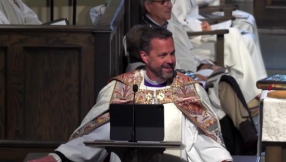Fascinating new evidence about the fall of Jerusalem to the Romans in AD 70 has been uncovered during the construction of a new campus for Israel's national school of art.
The city fell after Jews revolted against Roman rule and the Temple was destroyed, ending Jewish nationhood until the founding of the modern state in 1948.
Now archaeologists working in Jerusalem's historic Russian Compound, one of the oldest districts of central Jerusalem, have discovered evidence of the battle and the breaching of the 'Third Wall' that defended the city. They have uncovered the remains of a tower jutting from the city wall. Opposite its western facade were scores of ballista and sling stones that the Romans had fired from catapults towards the Jewish guards defending the wall, who were stationed at the top of the tower.
According to Dr Rina Avner and Kfir Arbib, excavation directors for the Israel Antiquities Authority: "This is a fascinating testimony of the intensive bombardment by the Roman army, led by Titus, on their way to conquering the city and destroying the Second Temple.
"The bombardment was intended to attack the sentries guarding the wall and provide cover for the Roman forces so they could approach the wall with battering rams and thereby breach the city's defences".
The historian Josephus, an eyewitness to the war, provided many details about this wall. According to him, it was designed to protect the new quarter of the city that had developed outside its boundaries, north of the two existing city walls.
The building of the Third Wall was begun by Agrippa I; however, he suspended its construction so as not to incur the wrath of Emperor Claudius and to dispel any doubts regarding his loyalty.
The construction of the Third Wall was resumed some two decades later by the defenders of Jerusalem, as part of fortifying the city and the Jewish rebels' preparations for the Great Revolt against Rome.













